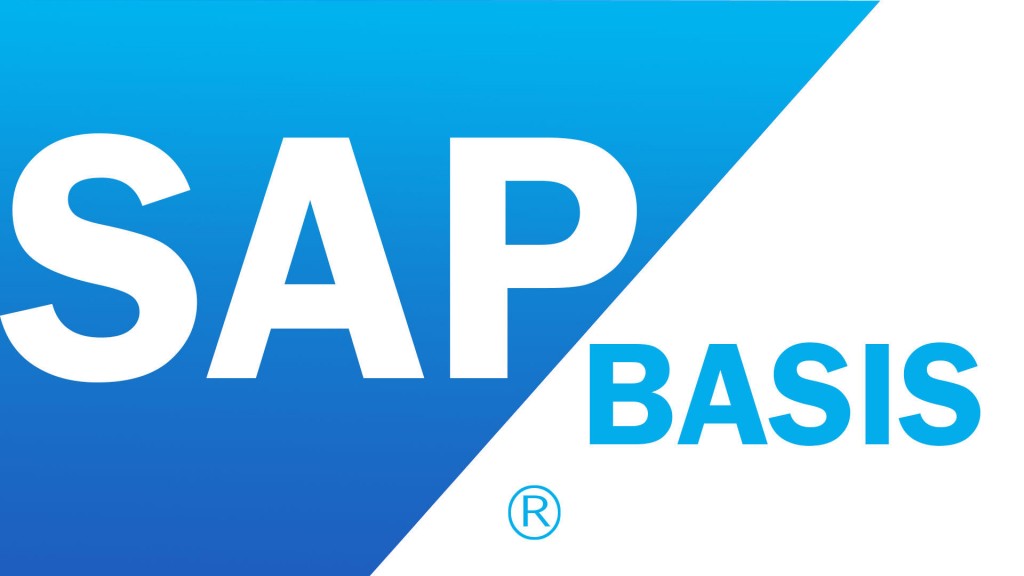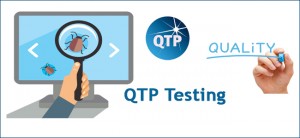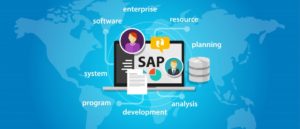SAP BASIS Interview Questions
Q1) Differentiate between System Log, Developer Trace and System Trace.
The following are the main differences between the three –
| System Trace | System Log | Developer Trace |
| For recording the internal system activities of SAP, this is used. | System Log is used in order to know the very present logs of the application server. | This is used in order to record certain information. |
| The host or the main system can be very well diagnosed and also internal problems can be properly handled by using this race. | Logs for Cl can also be known properly by using this. | To monitor the system without any error, developer trace is used. |
Q2) Define OSP$.
Mainly two types of user mechanisms named, OPS$adm and OPS$SAP are used in order to connect as well as communicate with the database internally. In the system of SAP, these services get created automatically.
Q3) Define RFC. How many types of RFC are there?
RFC is the abbreviation of Remote Function Call. This is a type of mechanism which helps in communicating as well as exchanging various types of information across the other SAP systems.
Mainly four types of RFC are present. These are namely,
1. Synchronous RFC (S RFC)
2. Transactional RFC (T RFC)
3. Asynchronous RFC (A RFC)
4. Queued RFC (Q RFC)
Q4) What is Transactional RFC?
Transactional RFC allows processing of the sent request for an error in the system, only once. This is done after allocating an ID for transaction process which is also known as TID. It is different from asynchronous RFC only in this aspect. The availability of the remote system is not necessary at the present moment in the T RFC.
Q5) Differentiate between JSPM and SDM.
JSPM is the abbreviation of Java Support Package Manager which is used in order for the application of support packages on the deployed components of the software. Basically, JSPM is an important tool which helps in the installation of the support packages and also all the components. To deploy packages, JSPM often uses SDM.
On the other hand, SDM which is the abbreviation form of Software Delivery Manager helps in importing Support Packages of Java. This is also used for deploying software packages and also used to manage them. These packages are said to be received from SAP.
Q6) Differentiate between support package, SAP note and kernel.
SAP note is used to implement the removal of error in single program or a transaction.
Kernel is the one which contains .EXE files which are also known as executable files. The older version of these files gets replaced after Kernel gets upgraded.
Support packages are basically just corrections.
Q7) Explain SAP single stack system.
SAP system defines SAP singlet stack system. These can have two types of runtime engine like JAVA or SAP Netweaver as ABAP. An example – Single Stack System (JAA) is basically SAP Enterprise Portal System (Ep). On the other hand, Single Stack System (ABAP) is basically SAP ERP (ECC).
Q8) Mention the main responsibilities of SAP Basis Administrator.
The chief responsibilities of SAP Basis Administrator are as follows –
- Configuration as well as installation of the system.
- The management of performances of various kinds of components.
- Load server balancing.
- Management of integration and interfaces with servers.
- Managing various kinds of servers and services provided by them.
Q9) List the various kinds of user types in the SAP system. Define each one of them.
There are five different types of user system in the SAP system. These are as follows –
1. Dialog user – Mainly for accessing interactive system from GUI, this type of server is used.
2. Communication User – For external RFC calls, this type of user is used.
3. System User – System User mainly helps in the background processing and intra system communication.
4. Service User – Anonymous and large group of users mainly uses this type.
5. Reference User – Allowance of assignment of extra authorization is done by this user. These are not related to persons as users.
Q10) Define SAP GUI.
SAP GUI is basically a client tool which helps in accessing the central server and also runs on various operating systems like UNIX, Microsoft Windows, and Mac etc. SAP applications like the SAP Business Intelligence System and SAP ECC are all managed by SAP GUI.
Q11) What are the different standard clients found in SAP Basis? How can a new client be created in the SAP System?
There are mainly three standard clients and these are as follows –
1. 000 – This becomes available with the installment of the R/3 system. This is also known as the master client.
2. 001 – Basically, 001 is just a copy of 000. It has a test copy. In order to create new clients, this is used.
3. 066 – This client is known as the SAP Early watch. If diagnosis and monitoring services are required in the SAP system, this is used.
New client can be created by following these steps –
- The transaction code which is to be used in order to create a new client is SSC4.
- Click on New Entries and put the details lke City, Client number and name and Currency and the Roles etc.
- Data specific to client needs to be entered and permission must be set.
- Click save option.
Q12) How can the SAP system be locked or unlocked?
SAP system can be locked or unlocked in two ways –
1. Manually or forcefully
2. Automaticlaly
For single user and for multiple users, transaction to be used is SU01 and SU10 respectively.
Q13) Mention the options or condition types available for a background job to be scheduled.
The conditons must be specified in order for the background job to be started. This is said to trigger the starting of the job. The following are the different kinds of start comditions which are to be used in order for the background job to be started –
1. Immediate
2. After Job
3. Date/Time
4. After Event
5. At Operation Mode
Q14) Mention the various categories which help in executing SAP Background jobs.
The categories are as follows –
Class A – High Priority: This category is mainly used for very critical and urgent tasks. Hence, these tasks also get scheduled with class A priority job. Maybe one or more than that background work processes gets reserved by Class A job.
Class B – Medium Priority: After the Class A priority jobs get completed, these types of jobs gets executed.
Class C – Low Priority: Similarly, after the completion of jobs of classes A and B, the job of class C gets started.
Q15) Mention the SAP GUI types suitable for various kinds of users.
Users who are working the SAP system mainly uses SAP GUI for Java or SAP GUI for Windows.
Users who are working as ABAP developers, SAP GUI for Windows is used.
When the operating systems of the users are not Microsoft, SAP GUI for HTML and SAP GUI for Java is mainly used. However, they can also use SAP GUI for windows.
For integration of Dynpro transactions to the Portal, mainly SAP GUI for HTML is used. Dynpro based applications are well integrated with the help of this, into the portal.
Q16) How can instances be created in the SAP system? How can these be configured?
Instances in the SAP system get created when the system gets installed and configured. Processors, memory and other resources get referred to by these instances. Various sources can be shared by users after logging in to the system. This is also allowed by the SAP instances. These are managed by CCMS. Users use them to login to the SAP system. One or even more than one instances can be present in the SAP system. Using only one CCMS, only one instance can be set up in the system. Two or more than those instances can be used to configure the system.
The following points are to be kept in mind in order to configure a SAP instance –
1. Separate directories for UNIX, Microsoft Windows NT server or AS/400 are to be defined properly as instances are mainly to be run on that particular server.
2. A shared file system can be used.
3. In the Operating system configuration files, correct entries to be put for the instances to be created.
Q17) Define private mode.
Data sharing across the SAP system is not available in the private mode as these data are allocated to specific users exclusively. Due to the exhaustion of the extended memory, this type of mode occurs.
Q18) Can you install SAP patches when all the other users are active or online?
When all the other users are online, the SAP patches can’t be installed. This is because these patches will not be able to be updated and terminated by the support manager. Hence, the best time to install SAP patches is when tere is an absence of users’ login in the SAP system.
Q19) Mention the use of table TADIR.
The object directory entries are included in the table TADIR.
Q20) Where does the list of repaired objects gets stored in the SAP system?
The list of repaired objects gets stored in the system including ADIRACCESS keys.
Q21) What are the uses of Parameter Tab?
Parameter Tab cab is used to allow accessing to the T-code which is assigned to the users to work on.
Q22) What are the uses of Personalization Tab?
Personalization Tab can used to connect RFC across the various systems.
Q23) What is the meaning of service user in SAP system?
In service user, passwords are not checked as the rights over the passwords are only entitled to the admin. Users can’t make changes to the passwords. Anonymous users uses service user. Multiple logins are also possible.
Q24) What is the meaning of reference user in SAP system?
GUI login is not possible for the reference user. User authorization from one user to another is made possible by this during an emergency.
Q25) What are logon groups?
Logon groups are mainly defined with the help of Tcodesmlg. At first, the group needs to be created and then the instances are to be assigned for those groups.
Q26) Mention the tools which are to be used in order to install JAVA patches.
SAP installer that is SAPinst.exe is to be employed in order to use or install JAVA patches. These patches can be deployed with the help of JSPM or also known as Java Support Package Manager and SDM or also known as Software Delivery Manager.
Q27) How many types of functional modules can be used in BDC?
dData transfer can be successfully conducted with the help pf using BDC. There are three functional modules namely,
BDC_OPEN_GROUP: In this module, mainly the client and sessions as well as the user names gets defines specifically.
BDC_INSERT: Data can be inserted from one session to another with the help of this module.
BDC_CLOSE_GROUP: Mainly used for closing the batch input session.
Q28) What is client refresh? How is it different from client copy?
Client refresh mainly includes copying or overwriting to an existing client. However, if the newly developed client gets copied, this is called client copy.
Q29) What is the meaning of business KPIs?
The full form of business KPIs is Key Performance Indicators. The performance of a company gets indicated strategically with the help of KPIs. The performances of the company get compared with the growth of the company. In this way, KPIs help in leading the company by keeping a good track. It also helps in doing comparison between various market leaders.
Q30) Define supplementation language.
The SAP system gets installed with German and English as the default language. Supplementary language gets installed in order to get other languages.
Q31) Name the SAP R/3 system Central interfaces?
Presentation
Database and
Operating system Interface
Q32) Define SAP R/3 Basis?
SAP R/3 Basis – A administration platform that allows to manage all SAP applications, R/3 network, monitoring and so on…
Q33) What are the SAP R/3 architecture layers?
Presentation layer
Application layer
Database layer
Q34) Which transaction code used for managing lock entries in SAP ?
SM12 is the transaction code that manages SAP lock entries.
Q35) For displaying user list, which transaction code used?
Transaction Code SM04 used for displaying the user list.
Q36) Name the phases of background that are processing in SAP ?
Job Scheduling
Job Processing
Job Overview
Q37) Define SAP Spool Request?
Spool asks for are produced amid discourse or background processing and put in the spool database with data about the printer and print arrange. The genuine information is puts in the Tem Se (Temporary Sequential articles).
Q38) At OS level in SAP, where can we check system log ?
Go –> SAP Management Sonsole –> “system logs” Under SID {or} You can check “/usr/sap//system/logs” directory.
Q39) Name some common transport errors?
Return code 4 – Imports with warnings
Return code 8 – Imports with errors (Syntax, Program generation and Dictionary activation errors)
Return code 12 – Specifies Import Cancelled
Return code 18 – Specifies Import Cancelled
Q40) Brief, the T000 table purpose in SAP ?
The purpose of SAP T000 table is you can view the list of user those are defined in the SAP system.
Q41) Which table can be used for SAP user login data?
USR02 table is used for finding the user lofin details.
Q42) How many number of profiles/roles can we assign to a user in SAP ?
A maximum of 312 profiles/roles we can assign to user.
For More Questions on SAP BASIS Certification Module and SAP BASIS Training in Chennai you can contact TIC Academy.




